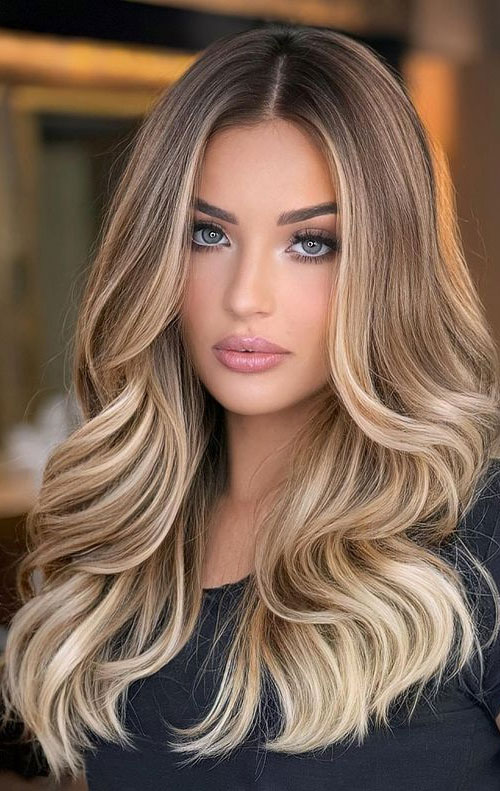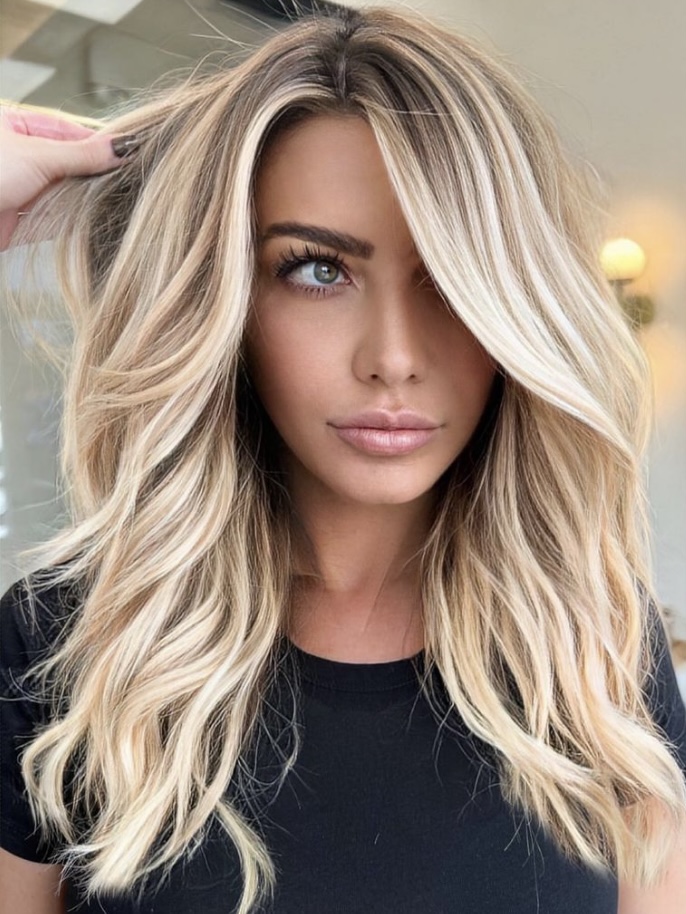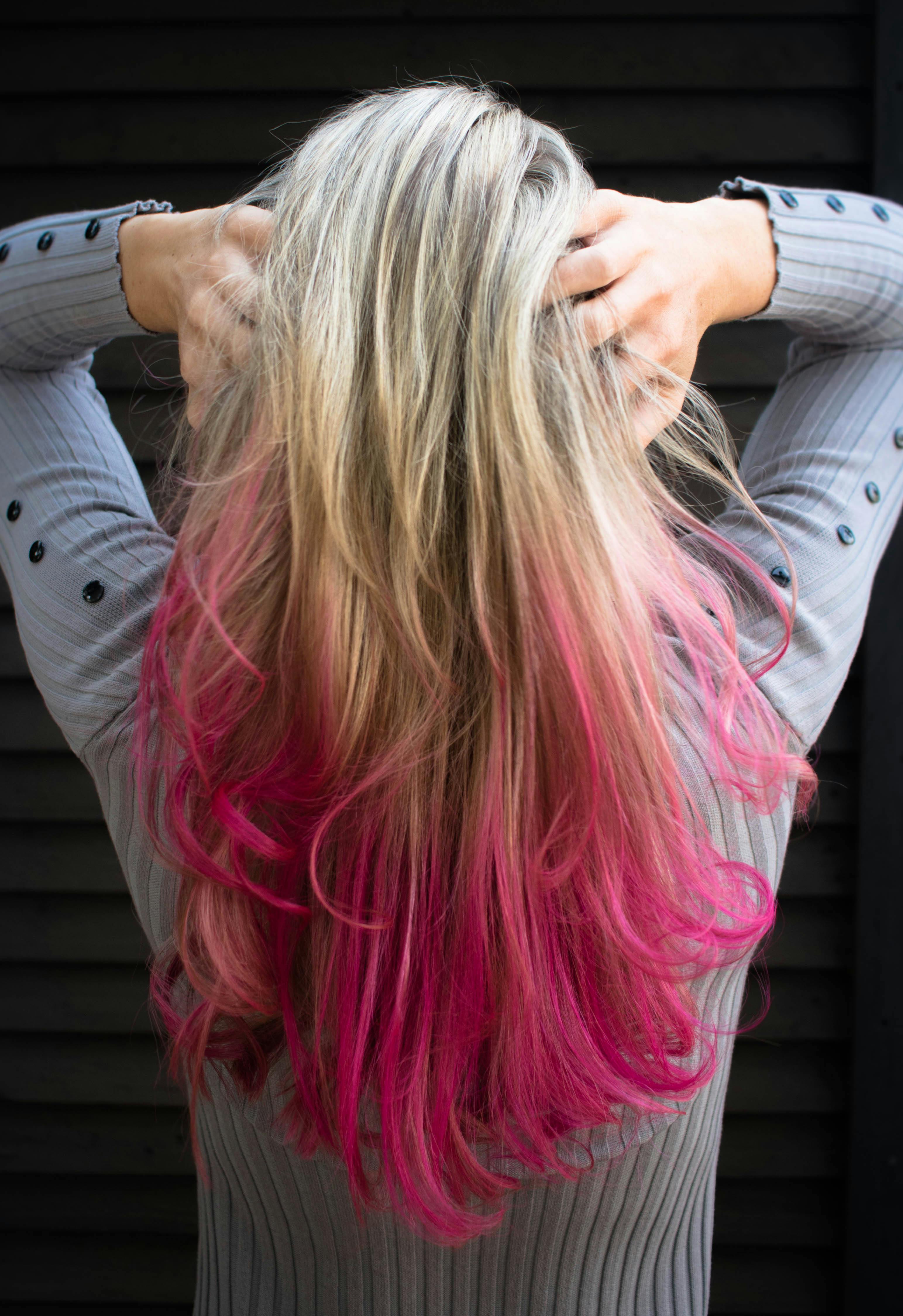Stepping into your 40s can feel like a fresh start, a time when you really know who you are, and that includes your personal style. It's a wonderful moment to think about your hair, to consider what truly makes you feel good and look amazing. Your hair, in some respects, is a big part of how you present yourself to the world, isn't it? It reflects your confidence and your journey, you know, over time.
For many, the hair you had in your 20s or 30s might not quite fit anymore, and that's perfectly fine. Hair changes, you see, as we get older, and that's just a natural part of things. It might feel a bit different, perhaps a little less bouncy, or maybe the texture has shifted somewhat. This isn't a problem, though; it's actually an invitation to explore new possibilities and discover looks that are even more suited to you today, like your current self.
This period of life offers a chance to really think about what works for you, from the way your hair feels to the styles you choose. It's about finding ways to celebrate your unique beauty and keep your hair healthy and vibrant. We'll explore some practical ideas and tips to help you feel fantastic about your hair, whatever your natural type, so you can find something that truly speaks to you, in a way, right now.
Table of Contents
- Understanding Hair Changes in Your 40s
- Finding the Right Cut for Hair for 40s
- Color Choices That Flatter Hair for 40s
- Essential Hair Care for Hair for 40s
- Choosing the Best Salon Experience
- Styling Tips for Hair for 40s
- Frequently Asked Questions About Hair for 40s
Understanding Hair Changes in Your 40s
As you move into your 40s, it's quite common for your hair to start behaving a little differently than it used to. This isn't a bad thing, just a shift that's good to be aware of, you know. These changes are pretty much a part of the natural process of growing older, and they can affect how your hair looks and feels on a daily basis, actually.
Texture and Thickness Shifts
One of the first things people often notice is a change in their hair's texture. What was once thick and full might seem a bit finer, or perhaps it feels less dense than before. Your hair might also become a little drier, which can make it feel a bit rougher to the touch, you know, in some respects. This can sometimes make it seem like your hair has less volume, or it might not hold a style quite the way it used to, which is pretty common.
Hair strands themselves might become smaller in diameter, and the overall number of active hair follicles can decrease. This means that, over time, your hair might appear somewhat thinner. It's just a natural part of how our bodies adjust, so it's nothing to worry about, really. Understanding these shifts helps you choose products and styles that work with your hair's current state, rather than against it, which is definitely helpful.
The Arrival of Grey
For many, the 40s are when grey hairs really start to make their presence known, and that's perfectly normal. Some people get a few silver strands here and there, while others see a more noticeable change, you know, in their overall hair color. Grey hair, interestingly enough, can have a different texture than pigmented hair; it might be coarser or a bit more wiry, which is something to consider.
This change in texture, combined with the color shift, means that grey hair can sometimes feel a little harder to manage. It might not absorb moisture in the same way, or it could react differently to styling products, apparently. Embracing your greys or choosing to blend them are both perfectly valid options, and a good stylist can help you figure out what looks best, in a way, for you.
Finding the Right Cut for Hair for 40s
Choosing a haircut that suits you in your 40s is about more than just following trends; it's about finding a style that flatters your face, works with your hair's natural qualities, and fits your lifestyle. A great cut can really bring out your features and make you feel incredibly confident, you know, every day.
Short and Chic Styles
Short haircuts can be incredibly liberating and stylish for women in their 40s. A well-chosen short style, like a classic bob or a playful pixie, can highlight your jawline and neck, giving you a fresh, modern appearance. These cuts often require less styling time, which is pretty convenient, and they can add the appearance of fullness to hair that might be thinning a bit, you know, on top.
For instance, a layered bob can create movement and body, making your hair look more voluminous. Pixie cuts, especially those with some soft layers around the face, can be really youthful and easy to manage. It's about finding a shape that complements your face structure, and a skilled stylist can certainly help with that, in fact.
Medium-Length Options
Medium-length hair, perhaps falling around the shoulders or collarbone, offers a lot of versatility. This length is quite popular because it's long enough for updos and braids but short enough to still feel light and manageable. A lob (long bob) with some subtle layers can give your hair a lovely shape and movement, you know, without being too heavy.
Adding face-framing layers to a medium cut can soften your features and draw attention to your eyes. This length is also great for trying out different textures, like soft waves or a sleek, straight look. It's a very adaptable length, basically, that works for many different hair types and personal styles, which is nice.
Longer Looks with Movement
If you prefer to keep your hair longer, that's absolutely an option in your 40s. The key is to ensure it has plenty of movement and shape, so it doesn't just hang flat. Long layers, especially those starting around the chin or collarbone, can add bounce and interest to longer hair. This helps prevent it from looking heavy or weighing down your face, you see.
Consider adding some soft waves or curls to long hair to give it more body and a relaxed, natural feel. A good stylist can advise on how to maintain healthy long hair, especially if you're dealing with dryness or thinning. It's really about keeping the ends looking fresh and the overall style feeling light and airy, you know, for a good look.
Color Choices That Flatter Hair for 40s
Hair color can make a huge difference in how you feel about your look, and in your 40s, there are so many fantastic options. The right color can brighten your complexion, add depth to your hair, and even make your hair appear fuller, which is pretty cool. It's really about finding shades that work with your skin tone and personal preference, you know.
Blending Grey Naturally
For many, managing grey hair is a primary reason to consider coloring. Instead of a solid, opaque color that can sometimes look a bit harsh, consider techniques that blend the grey rather than completely covering it. Highlights and lowlights, for instance, can create a softer, more natural look, allowing your grey to become part of a multi-tonal effect, which is quite popular these days.
Balayage or foilyage techniques can also be great for grey blending, as they offer a more lived-in, gradual transition, so it's almost like your hair is just naturally varied. This approach often requires less frequent touch-ups, which is pretty convenient for busy schedules, and it looks very natural as it grows out, you know, in a good way.
Adding Warmth and Shine
As we get older, our skin tone can sometimes become a little less vibrant, and a hair color with some warmth can really counteract that. Golden blondes, rich caramels, or soft auburns can add a lovely glow to your face, making you look more radiant. These shades often reflect light beautifully, giving your hair a healthy, glossy appearance, which is definitely a plus.
Even if you prefer cooler tones, adding some subtle, warm undertones can prevent your hair from looking flat or dull. Talk to your stylist about shades that complement your skin and eye color, because they can really help you pick something that makes you shine. It's about finding a color that makes your hair look its best and, honestly, makes you feel great, too.
Essential Hair Care for Hair for 40s
Taking good care of your hair becomes even more important as you reach your 40s. Hair often needs a bit more attention to stay healthy and vibrant, given the changes it might be going through. A consistent care routine can make a real difference in how your hair looks and feels, you know, every single day.
Hydration and Nourishment
One of the biggest needs for hair in your 40s is moisture. Hair can become drier, so using hydrating shampoos, conditioners, and weekly hair masks is really beneficial. Look for products that contain ingredients like hyaluronic acid, argan oil, or shea butter, which are known for their moisturizing properties. These can help to keep your hair soft and supple, basically.
Deep conditioning treatments are a great way to give your hair an extra boost of nourishment. Applying a mask once a week can help restore moisture, improve elasticity, and make your hair feel much smoother. It's like giving your hair a drink of water, you know, keeping it from getting parched, which is pretty important.
Scalp Health Matters
Healthy hair starts with a healthy scalp, and this is especially true in your 40s. As we age, scalp circulation can sometimes slow down, and product buildup can become more noticeable. Using a gentle scalp scrub or a stimulating scalp serum can help keep your scalp clean and promote a good environment for hair growth, which is actually really important.
Massaging your scalp regularly can also help increase blood flow to the hair follicles, which might encourage healthier hair. If you have any specific scalp concerns, like dryness or itchiness, talking to a hair care professional can help you find targeted solutions. It's about treating your scalp with the same care you give your skin, you know, for overall hair well-being.
Protecting Your Strands
Your hair in your 40s might be more susceptible to damage from heat styling, sun exposure, and environmental factors. Using a heat protectant spray before blow-drying or using hot tools is a must. This creates a barrier that helps shield your hair from extreme temperatures, which is pretty useful.
Consider wearing a hat when you're out in the sun for extended periods, as UV rays can fade color and dry out your hair. Also, try to minimize harsh chemical treatments if your hair is already feeling a bit fragile. Sometimes, giving your natural hair a rest from chemicals and heat, like by opting for protective styles, can make a real difference in its health, too.
Choosing the Best Salon Experience
Finding the right hair salon is absolutely key to getting the look you want and keeping your hair healthy, especially in your 40s. It's not just about a haircut; it's about finding a place where you feel comfortable and understood, where they really listen to what you want, you know. You want a place that offers a wide array of hair care services, from haircuts to color, texture treatments, and even waxing, so it's a full-service spot.
When you're looking, consider places known for having highly skilled and educated staff, maybe even a team of master stylists with over 40 years of expertise in the field, like some of the established places. You want stylists who are passionate about the art of hair styling, coloring, and even frizz taming. They should be able to help you achieve your dream hair, whether it's beachy waves or a bold transformation, honestly.
Some salons really focus on creating an experience that leaves you feeling refreshed and renewed, not just with a new hairdo. They might specialize in promoting healthy hair, with an approach that's simple and carefree. It's good to check reviews and compare prices, and many places now let you book your appointment online, which is pretty convenient. You want a place that cares about your hair and offers the undivided attention you deserve, basically.
For those with specific needs, like curly hair, look for salons that are known for being the best hair salons for curly hair. Some places offer natural hair care options, where natural hair is braided, and weaved hair is sewn atop a net covering the braids, helping you get that luscious hairstyle in less time. It's about finding a salon that matches your needs and gives you that amazing new 'do that will, you know, make heads turn.
You can learn more about hair care options on our site, and also find details about various hair services that might be perfect for you. It's about finding that perfect match, in a way, for your hair journey.
Styling Tips for Hair for 40s
Once you have a great cut and color, styling is where you really bring your look to life. For hair in your 40s, it's about finding styles that are easy to achieve, look polished, and make you feel fantastic. It's not about complicated routines; it's more about smart choices, you know, for daily wear.
Everyday Looks
For daily wear, aim for styles that are low-maintenance but still put-together. A soft, natural wave can be achieved with a little texturizing spray and minimal heat. If your hair is on the finer side, a volumizing mousse at the roots before blow-drying can give it a nice lift. It's about enhancing what you have, you see, rather than fighting it.
A simple, sleek ponytail or a low bun can look incredibly chic and sophisticated. Accessories like headbands or decorative clips can also elevate an everyday style without much effort. The goal is to look effortlessly good, so it's almost like you just woke up looking amazing, which is pretty much the dream.
Special Occasion Styles
For special events, you can definitely go for something a bit more elaborate. Updos that are soft and a little undone can be very flattering, as they tend to be less severe than very rigid styles. Think loose curls pinned up, or a braided crown with some pieces gently pulled out around the face, you know, for a softer look.
Half-up styles, where the top section of your hair is pulled back, can also be lovely, showing off your length while keeping hair out of your face. Talk to your stylist about special occasion looks that work with your hair type and the event. They can offer ideas that truly complement your outfit and make you feel absolutely stunning, you know, for that big day.
Frequently Asked Questions About Hair for 40s
People often have questions about how to best care for and style their hair as they get older. Here are some common things people wonder about, you know, regarding hair in their 40s.
1. What are the best hairstyles for women in their 40s?
The best hairstyles for women in their 40s really depend on your hair type, face shape, and personal style. Many find that cuts with layers, like a layered bob, a long bob (lob), or even a chic pixie cut, work very well. These styles often add movement and volume, which can be really flattering. Longer styles with significant layers also look great, provided they have good shape and don't weigh down your face. It's about finding something that feels fresh and complements your features, so you look your very best, basically.
2. How does hair change in your 40s?
In your 40s, hair typically undergoes several changes. You might notice a shift in texture, where hair becomes a bit finer or possibly drier. The overall thickness can decrease, meaning your hair might feel less dense than it used to. Of course, grey hairs often become more prominent during this decade, and these grey strands can sometimes have a coarser or more wiry texture than your pigmented hair. These changes are a natural part of getting older, you know, and they just mean your hair might need a slightly different approach to care and styling.
3. What hair care products should I use in my 40s?
For hair in your 40s, focusing on hydrating and nourishing products is a good idea. Look for shampoos and conditioners that provide moisture and help with dryness, perhaps those with ingredients like hyaluronic acid or natural oils. Weekly deep conditioning masks are also very beneficial for adding an extra boost of hydration. If you use heat styling tools, a good heat protectant spray is absolutely essential. Products that support scalp health, like gentle scrubs or serums, can also be helpful, as a healthy scalp is pretty much the foundation for healthy hair, you see. It's about giving your hair what it needs to thrive, in a way, at this stage.



